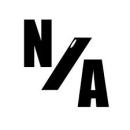Neal Ford
Lone Star Software Symposium: Dallas
Dallas · June 4 - 6, 2010

Director / Software Architect / Meme Wrangler
Neal is Director, Software Architect, and Meme Wrangler at ThoughtWorks, a global IT consultancy with an exclusive focus on end-to-end software development and delivery.
Before joining ThoughtWorks, Neal was the Chief Technology Officer at The DSW Group, Ltd., a nationally recognized training and development firm. Neal has a degree in Computer Science from Georgia State University specializing in languages and compilers and a minor in mathematics specializing in statistical analysis.
He is also the designer and developer of applications, instructional materials, magazine articles, video presentations, and author of 6 books, including the most recent The Productive Programmer. His language proficiencies include Java, C#/.NET, Ruby, Groovy, functional languages, Scheme, Object Pascal, C++, and C. His primary consulting focus is the design and construction of large-scale enterprise applications. Neal has taught on-site classes nationally and internationally to all phases of the military and to many Fortune 500 companies. He is also an internationally acclaimed speaker, having spoken at over 100 developer conferences worldwide, delivering more than 600 talks. If you have an insatiable curiosity about Neal, visit his web site at http://www.nealford.com. He welcomes feedback and can be reached at nford@thoughtworks.com.
Presentations
Evolving towards REST-based Enterprise Integration
This talk describes an agile approach to architecture, and merges the current state-of-the-art thinking in both service oriented architectures(SOA) and web-based architectures like HTTP, REST, and hypermedia.
Emergent Design
Emergent design is a big topic in the agile architecture and design community. This session covers the theory behind emergent design and shows examples of how you can implement this important concept.
Testing the Entire Stack
This talk covers testing the entire stack: unit, integration, functional, behavior-driven, databases, user acceptance, mocking & stubbing, and other topics and strategies.
Visualizations for Code Metrics
Judicious use of metrics improves the quality of your code. But interpreting metrics presents a challenge. You have a list of numbers for a project - what does it mean? And what does it tell me about the health of the project overall? This sessions shows how to produce visualizations for software metrics, making them easier to understand and more valuable. It covers metrics at the individual method level all the way up to the overall architecture of the application. This isn't just a talk about how some tools produce visualizations: this session shows you how to generate your own visualizations, allowing you to customize it to the level in information density that shows real value on your project. I show how to produce projected graphs from dependencies, heat-maps for cyclomatic complexity and code coverage, using XSLT to extract visual information from XML configuration documents, and others. Metrics can't help you if you can't understand them. By creating visualizations, it helps leverage metrics to make your code better.
Agile Engineering Practices
Most of the time when people talk about agile software development, they talk about project and planning practices and never mention actual development practices. This talk delves into best development practices for agile projects, covering all of its aspects.
Keynote: Smithing in the 21st Century
Blacksmiths in 1900 and PowerBuilder developers in 1996 have something in common: they thought their job was safe forever. Yet circumstances proved them wrong. One of the nagging concerns for developers is how do you predict the Next Big Thing, preferably before you find yourself dinosaurized. This keynote discusses why people are bad at predicting the future, and why picking the Next Big Thing is hard. Then, it foolishly does just that: tries to predict the future. I also provide some guidelines on how to polish your crystal ball, giving you tools to help ferret out upcoming trends. Don't get caught by the rising tide of the next major coolness: nothing's sadder than an unemployed farrier watching cars drive by.
